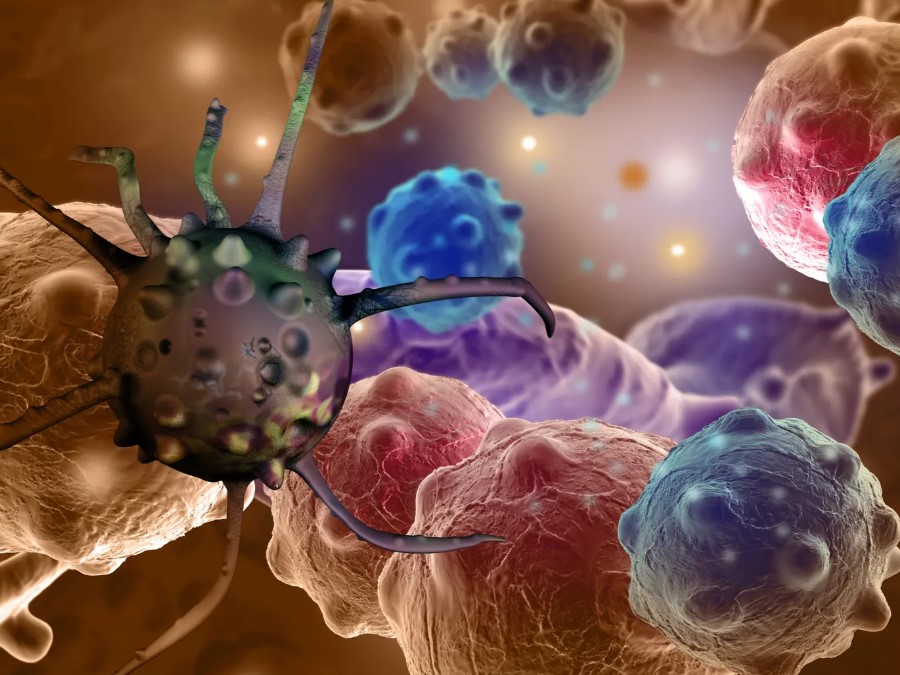Nanomedicines in Cancer Therapy
Cancer is one of the most dangerous and leading death-causing diseases in the world in terms of morbidity and mortality. Cancer is characterized by abnormalities in cellular mechanisms leading to survival and proliferation of malignant cancer cells. The signaling pathways are also altered on the occurrence of cancer which in turn inhibits the physiological apoptosis contributing to its further development.
Despite the availability of several conventional cancer therapies like chemotherapy, immunotherapy, radiation therapy, etc., the research on cancer treatment is still in need of an efficient therapy of great social importance, as the traditional treatments are associated with pain, lack of targeting, cytotoxicity, and initiation of multi-drug resistance.
The emergence of nanotechnology has transformed the realm of cancer diagnosis and treatment; it has brought a paradigm shift from conventional therapy to precision medicine. The Nanoparticles (NPs) accomplished their distinct characteristics such as biocompatibility, specific targeting for eluting drugs, exceptional stability, reduced toxicity, excellent specificity, and enhanced permeability have unmitigated their scope in cancer therapy beyond traditional treatments. The encapsulation of drugs within nanoparticles enables for the direct delivery of drugs to target tumor sites, reducing systemic side effects, and allowing for a higher dose to reach the cancerous tissue.
Apart from the nanoparticles, additionally, there is the potential use of Nanorobots in cancer diagnosis and treatment. Nanorobots are controlled devices composed of nanometric components that can interact with the cellular membrane due to their small size, offering a direct channel to the cellular level. Nanorobots can improve treatment efficiency by performing advanced biomedical therapies using minimally invasive operations. Moreover, Nanorobots are currently designed to recognize 12 different types of cancer cells such as colon cancer, glioblastoma, melanoma, neuroblastoma, breast cancer, cervical cancer, etc.,
Mechanism of Tumor targeting by drug-eluted nanoparticle
An incredibly significant criterion for the selection of a nanoparticle for cancer therapy would be its efficiency in targeting the cancerous tissue with high precision and having negligible side effects on the normal tissue. It is also important to cognize the tumor biology and the interaction between the Nanoparticles and the tumor cells. The mechanism of drug delivery through the nanoparticles and the advantages of it will vary correspondingly with the carrier used. Nanocarriers directly deliver therapeutic agents to the bloodstream and reach the targeted area. It increases the plasma half-life of the Nano-size drugs and alters the biodistribution, resulting in differential amassing of nanoparticles in the cancerous tissues. This discrepancy in the accumulation of nanoparticles in tumor tissues will result in an elevated concentration of the drug in these tumor tissues than in the plasma or other normal tissues. This phenomenon results in prolonged therapeutic effects in addition to targeting they then provoke DNA damage by the overproduction of reactive oxygen species (ROS). As an endpoint, this may lead to apoptosis and death of cancerous tissue.
Targeting the tumor cells using Nano based drug delivery includes two methods namely: The active method and the Passive method
- Active targeting utilizes the attributes of the tumor cells such as the cell surface receptors. Still, the targeting is achieved by the use of a range of molecules hybridized along with the carrier to particularly target the cancerous tissue. It relies on specific ligands or molecules, like transferrin and folate, which bind to molecules or receptors that are explicitly expressed or over-expressed on the target cancerous cells. This type of targeting is also termed ligand-mediated targeting.
- Passive targeting uses the properties of the target site to concentrate the Nano-vehicles with the drugs in it. The properties of the target site, considered include Enhanced Permeability and Retention (EPR) and Tumor Micro Environment (TME). Unlike normal cells, cancerous cells induce neovascularization due to high propagation and large pores in the vascular walls which in turn favors passive targeting.
Clinical Application of Nanomaterials for Drug Delivery
In Conventional cancer treatment, there exist limitations in the dosage methods, such as oral ingestion and intravenous injection, but controlled release systems offer many advantages. The use of nanoparticles as controlled release systems not only improves drug efficacy and diminishes side effects but also improves patients’ amenableness with their medication.
- Organic Nanoparticles have been widely explored for years and include many types of materials. Liposomes, the first developed and approved Nano-scale drug for clinical application can provide a good platform for the in vivo delivery of anti-cancerous drugs, such as chemotherapeutic agents. Polymer-based Nanoparticles such as Polylactic-co-glycolic acid (PLGA) is more advantageous over the other organic NPs since they have better biocompatibility and biodegradation. Dendrimers another class of polymers are utilized as NP’s for their versatile nature and better biocompatibility. Micelles, the amphiphilic copolymers constitute a hydrophobic core and hydrophilic segment that enables the insoluble anti-tumor drugs to be delivered smoothly at the target site and increase the stability respectively.
- Inorganic Nanoparticles includes carbon nanotubes, and silica nanoparticle etc., Carbon nanotubes have a great potential for anti-cancer drug delivery due to their unique physical, biological, and chemical properties.
- Hybrid Nanoparticles endow a multifunctional anti-cancer drug carrier with enhanced treatment, better efficacy as well and reduced drug resistance. Lipid-polymer hybrids, and Liposome – silica hybrids are the most commonly available hybrid NPs.
Current Challenges and Future Perspectives
Thus application of Nanotechnology in Cancer therapy has headed to a new era in the field of oncology. There are many benefits of using NPs in cancer treatment, such as their Nano size, high reactivity, better surface area, improved pharmacokinetics, biocompatibility, tumor targeting, etc., Though NPs demonstrated these advantages, the clinical efficacy of this therapy remains unsatisfactory. The safety and tolerance of such treatments require further investigation and thorough research. Thus, the future of Nano-based materials for cancer diagnosis and therapy relies on better exploration of the crosstalk between the NP-based drug delivery system and the tumor immunity
Source

